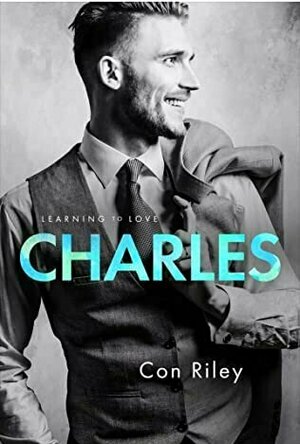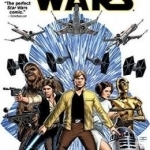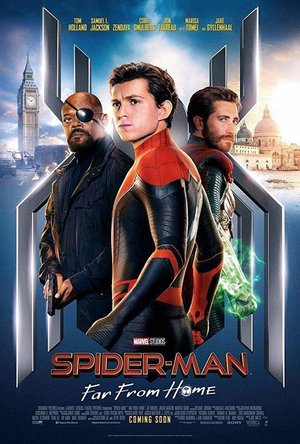Debbiereadsbook (1623 KP) rated Charles (Learning to Love #1) in Books
Jul 28, 2021
Once upon a time, there was a reader much like yourself. She read for pleasure, but also had fallen down the slippery slope of reading to review, so every book she read needed a review written. Fun, but hard work sometimes, especially when said reader found herself in a book funk of EPIC proportions, and that almost every book she read, was dumped.
Then THIS book landed in her queue to read and review. There had been lots of books dumped this past week, and there weren't many review books in her queue, but this one was asked for ages ago, and so she wanted to read it. So on a quiet evening at work, she jumped in.
And she was pulled back into the small Cornish village that this book is set, the same one that feature in the HIS series, and she was pulled deeper and deeper and she did not stop reading! Well, she did, but only because she was at work! Going home, and she finished this book, staying up waaaaaaaaaaaaaaaaaay past her bedtime, and she loved it!
She loved Charles. Charles is the third son of an Earl, but he just wants to use his degree to help children who might slip through the net, much like he did. His undiagnosed dyslexia meant he did not get the help he needed as a child, and he doesn't want that for another child. He sees the world differently and wants to help. Applying for the teachers job for a group of 4/5 year olds is his dream job. But the head doesn't think Charles is qualified enough but offers Charles a different sort of job. To bring a smile to his friend's face again.
The reader loved Hugo too. Even though Hugo isn't given a voice, the reader heard him good and well when he speaks. When he touches Charles, when Charles touches him. Hugo was HEARD. Hugo's calling is questioned but his faith is not. He needs to make a decision about fully committing to the church, but he also needs to heal first. Charles helps him to heal, inside and out.
The reader loved that Hugo doesn't hold Charles' history against him. Loved the fact that Hugo almost embraced it. The reader was made to cry. Charles has a deep soul, and he wears his emotions on his face and Hugo sees Charles, really SEES him.
The reader loved that Kier and Mitch, from His Haven. Charles and Kier are best friends. Loved that Kier saw Charles too, just in a different way to Hugo. The reader loved that Charles and his brother George got on soooooooooo much better towards the end of the book than the beginning!
The reader found this a very emotional book. Whether that was because of Charles, or Hugo or them both together, she wasn't quite sure, but she loved that it was. There are deep and complex emotions in this book, and it made the reader slow her reading down, to fully appreciate them.
And the epilogue?? Oh, the reader bawled her heart out at that, she really did!
So, all in all, the reader LOVED this book! The reader wants more of this author!
And the reader lived happily ever after, because lots of this author's books are now settled on her kindle!
The end, with 5 full and shiny stars!
**same worded review will appear elsewhere**

LumaFusion
Music and Photo & Video
App
LumaFusion is the most powerful multi-track video editor ever created for mobile devices. Used by...
videoediting bestvideoeditingapp professionalleveleditingapp

djay Pro for iPhone
Music and Entertainment
App
• "djay Pro for iPhone is a serious tool...it’s a must-have for DJs and VJs alike.” -...
Heather Cranmer (2721 KP) rated Losing Francesca in Books
Jun 7, 2018
How interesting does this book sound!?! The blurb definitely caught my attention, and I'm glad it did because I loved this book!!
I think the title suits this book. It's about the main character losing who she thought she was, so I think it suits the book just fine.
I'm usually not a big fan of just sticking a girl on the cover of a book, but with Losing Francesca, it works. I think if it had much more than Francesca on the cover, it'd be too cluttered.
I found the world building to written quite well for the most part! It was easy to slip into Francesca's shoes and feel exactly what she was feeling. The only part I didn't like was the insta-love between Francesca and Brody. It just didn't feel that believable. Also, I felt as if Francesca accepted her new life too quickly. She didn't act nervous or scared enough, I felt. However, saying that, I've never been in that situation, so I can't pass judgement too much.
The pacing is absolutely fantastic in this book! I usually only read ebooks at night while I'm laying down, but with Losing Francesca, I was reading this book at all times. I couldn't wait to read about what would happen next. This book definitely held my attention.
I really enjoyed the whole plot. I found it to be original and interesting. I like the idea of a girl that was kidnapped being recognized as the child who went missing years ago. I wanted to see what it'd be like. There aren't really any plot twists in this book, but that doesn't take away from how good it is.
I didn't really like the character of Francesca until towards the end. She came across as being a snobby rich girl. Even when she was with Brody and had stopped with the whole rich girl act, she still seemed like she was bragging about how rich her family is. To me, she was too spoiled and too much of a show-off. However, I did start liking her towards the end. I did like Brody. I loved his determination and his never give up attitude. Although he used to be a bit of a bad boy, he came across as a gentleman.
The thing that annoyed me with the dialogue is that the swearing seemed too over the top. Brody swears a lot, and most of the time, the swearing seems forced and fake. It doesn't come across as natural because Brody does it too much. And it wasn't just Brody. Some of the other teenagers swore as well, and it didn't come across as natural. Other than the unnatural swearing, the dialogue was quite enjoyable. We get point of views from Francesca and Brody which was quite enjoyable to read. I enjoyed reading Francesca's point of view the best.
Overall, Losing Francesca by J.A. Huss was a super good read! There were a few problems, but those were easy to overlook with how great the book was!
I'd recommend this book to those aged 17+ who are after an interesting and sweet read. I'm only recommending it from age 17+ due to the language (which there is a lot of swearing). Otherwise, this would've been a 14+.
I'd give Losing Francesca by J.A. Huss a 4.5 out of 5.
(I received a free ecopy of this title from the tour host in exchange for a fair and honest review).
Jordan Binkerd (567 KP) rated Star Wars, Vol. 1: Skywalker Strikes in Books
Jul 21, 2019
Okay, cards on the table: I loved the Dark Horse Star Wars comics. Almost all of them, especially anything featuring the team-up of Ostrander and Duursema. So I was very much saddened to see that company lose the Star Wars license. Not surprised, following the purchase by Disney, as that mega-company also owns Marvel. I figured it was only a matter of time, and that turned out to be the case. So I was saddened, just as I was saddened by the relegation of a bunch of my favorite stories to the status of Legends. But the one thing I never expected was that Marvel would drop the ball. I mean, it’s bleedin’ Marvel! If there’s anything they understand, it’s comic books. Now, having read the first arc of their eponymous Star Wars series, I can confidently state that my faith was well-founded.
We join our cadre of heroes as they attempt a daring assault on the Empire’s largest weapons factory, the entire planet of Cymoon I. Posing as a trade delegation from Jabba the Hutt arriving to negotiate renewed supply lines in the wake of the destruction of the Death Star, our heroes slip through security and set about rigging the automated factory’s reactor to blow sky-high. Everything is going to plan, until Darth Vader shows up to negotiate for the Empire….
I mentioned that this was amazing, right? The writing and art sync perfectly to sell you on the fact that you’re watching the continuing adventures of Luke, Leia, and Han. Luke is still a brash hotshot, still feeling his way with regards to the Force, and can be kind of whiny when he’s confronted with just how far he has to go. Han is just as sardonic and impulsive as ever, though the backstory they’re teasing for him may help ground him a bit. We’ll see how that one turns out. Leia is clearly in charge, driven to achieve justice for Alderaan and her family, and even Chewbacca knows to follow her orders. It’ll be interesting to see where they take her character in future arcs.
One potential point of annoyance for some readers is going to be how closely this series and the Star Wars: Darth Vader series that runs concurrently are tied. Events from one series are offhandedly referenced in the other with no explanation, and have major repercussions at times. For example, Vader fails to apprehend our Rebel heroes in this book, is chastised by the Emperor and hires Boba Fett in the Darth Vader book, and then Fett shows up in this book to try and capture Luke. Complicating matters further is the fact that there’s a particular order you need to read these in to get the whole story, and even then you’ll get ahead of yourself unless you stop in the middle of an issue at times. I wasn’t that annoyed by it, but I’d checked out the timeline first and knew what I was doing. (In case you were wondering, the proper order is Star Wars #1-3, Darth Vader #1, Star Wars #4, Darth Vader #2-4, and then #5-6 of both series happen simultaneously, both culminating in the same scene from slightly different perspectives.) This is set in the first year following the destruction of the Death Star, maybe a couple months at most.
CONTENT: Some violence. Minor profanity. Mild flirtation, and a few scantily-clad females in Jabba’s Palace.
Original post: https://jordanbinkerd.wordpress.com/2015/08/25/review-star-wars-skywalker-strikes-by-jason-aaron-john-cassaday/

Goods Order Inventory System Pro
Business and Utilities
App
Goods Order Inventory System (GOIS) Goods Order Inventory System (GOIS) is an all-encompassing...

DJ Rig for iPad
Music and Photo & Video
App
THE PRO-QUALITY DJ MIXING APP NEW VERSION INTRODUCES PLUG AND PLAY SUPPORT FOR iRIG PADS! DJ Rig...

DJ Rig FREE for iPad
Music and Photo & Video
App
NEW VERSION INTRODUCES PLUG AND PLAY SUPPORT FOR iRIG PADS! DJ Rig is a full-featured DJ mixing app...
Corey Richard Bennett (10 KP) rated Spider-Man: Far From Home (2019) in Movies
Jul 18, 2019 (Updated Jul 18, 2019)
This is peak portrayal of the web-slinger as Tom Holland makes you really feel for his teenage character who is balancing a life of normality and a life with huge responsibility. Peter constantly thinks of his friends well-being and hiding his secret identity throughout Europe. Then there is the aspect of Peter's budding romance for MJ, played beautifully by Zendaya. This incarnation of MJ is quirky and awkward, which is not like any other portrayals I have seen before, but it matches with Holland's Parker, as he too is awkward as most teenagers trying to find themselves in life.
Now the bad guy. Mysterio is a long well known enemy in the Spider-Man lore, so the twist that he is Master of Illusion should not be a shock, but the trailers did a good job painting the possibility that we were seeing a new incarnation of the dome-headed man of mystery. The trailers also got fans excited, with the possibility of a multiverse being created by the snap of Thanos, now referred to as the Blip by the people of Earth. The multiverse could have been the way to shoe-horn the X-Men into the MCU, but alas it was all a ploy to get the ever powerful Stark Tech glasses (known as EDITH Even Dead I'm The Hero) away from Peter, as Tony had left them to him in his will. Tricking everyone including usually tactful Nick Fury, Mysterio gains Peter's trust, and then his glasses, as Peter thinks Beck is a more fitting replacement to Iron-Man than Peter himself, who wants to live a normal life for the time being. Mysterio almost gets away with his plan, but with one simple slip-up Peter realizes his gaff and pursues Beck to Berlin, which brings me to the best scene (In my humble Opinion).
Knowing Peter is on his way, Beck springs his own web of illusions around Peter which tricks Peter immensely, and dazzles the fan. Tricking Peter to the point that he learns who knows of his plan, dispatches Peter via a train, which Peter barely survives. Beck moves his plans to London where he tries to enact his greatest illusion but a rejuvenated Peter (with help from Happy Hogan) thwarts Beck's plan which ultimately leads to Beck's untimely demise. But with his plan burning around him, he uses his last minutes to frame Peter in his death, and reveal his identity to the world.
In the course of the movie, Peter and MJ finally reveal their feelings for one another, and become a couple before landing back in the USA, but with Peter's secret to the world (which MJ had figured out a while back) their relationship and Peter's safety hangs in the balance. Now the only question alot of people like myself are left wondering, what's next? What's next for the MCU? and Whats next for Spider-Man? Well for the MCU, Black-Widow's solo movie seems to be next in line with Guardians 3 in the Horizon. As for Spider-Man, Marvel and Sony's deal has one more movie left, so hopefully they make a longer agreement, as Tom Holland should being playing this role for a long time. The next film should be a fantastic spot to bring in Kraven the Hunter into the MCU, as Peter Parker is now enemy number 1 in New York and Kraven would be the best villian to set loose to hunt for Peter. Using MJ as bait or even Ned, the story rights itself, even possibly using the comic book story which Kraven buries Spider-Man. But I guess we need a few more years to find out what will happen to Peter, but this film is a great one in a line of great MCU entries.
P.S. Yeah that end-credit scene. Yup, we are getting Secret Wars storyline as the next big Avengers event.
Kayleigh (12 KP) rated Bone Dressing (Book 1) in Books
Jan 2, 2019
Unfortunately, unlike the <a href="http://awowords.wordpress.com/2013/04/05/dead-letter-office/">first book</a> I received to review, I really didn't like this story, and I won't be reading the next books in the series. Part of the premise wasn't bad - a 17-year-old girl, Syd, goes back to a previous life and discovers she has an ability to shapeshift into 5 different animals - but there are many flaws that made it a challenge to read.
To start with, the premise I mentioned above was bogged down with so many other storylines trying to demand attention. There's a sexually harassing, paedophile teacher; issues with her dead parents (which never actually goes anywhere); boy issues (which I'll discuss later); and probably several other things I genuinely don't care about.
Then, there's Sydney. I don't think I've ever finished a book with a main character as unlikeable as her. Now, I understand she misses her parents (who died 7 years previously), but from what the story says, she has been with her foster parents ever since, and they treat her as good parents should, so I don't understand the amount of anger that spews from her for about 80% of the time she's appearing as Syd (as opposed to Rachel).
If you've read any of the reviews on my <a href="http://awowords.wordpress.com">blog</a>; before, you may have realised that I hate books that completely devolve from reality, especially when it comes to love. Syd mentions at the beginning of the book that she's had dates with 'hot' guys, but that she's put off as soon as they open their mouths. Then, one day, she's met by Beau (at the friggin' cemetery, by her parents' graves), and despite his stalkerish (and is it just me to think vampiric?) tendencies, she falls head over heels in love with him. Well, duh. She then has her life threatened by a panther, and decides to take that moment to declare how she feels about him. I'm not sure about anyone else, but that's not what I'd do.
When Syd goes back to her previous life, as Rachel, she again is madly in love with a man named Jesse. This section of the book is slightly better written in that Rachel has more vulnerability than Syd, and the events are more exciting and less jumbled. I was intrigued as to how Syd could help Rachel change the events (which was hinted at by Beau), and can't help feeling that if there had been more of this and a LOT less lead-up, I would have enjoyed the book more. The end of the book finished on a cliffhanger, with nothing of importance having been 'tied up', and expecting the reader to buy the next book in order to carry on.
Then there's Mr Askew. I won't waste my breath on this: he is a paedophile that sexually harasses Syd in front of the whole class. Worst student in the world or not, Sydney could get him done - no bargaining. Plus, why have her start at burning down the school only to not refer back to what was already mentioned when it happens at the end?!
In general, an annoyance throughout the book was the amount of metaphors and adjectives used for everything. If there's one word used to describe something, there can be three, appears to be this book's motto! Metaphors can be amazing, but they were taken too far here. (This blogger <a href="http://ashleychristiano.wordpress.com/2011/10/10/bone-dressing-by-michelle-brooks/">here</a>; agrees!) Picture this type of language every other page or so:
<blockquote><i>"I could feel the waves of an overwhelming heartbreak ravaging my body, taking hold as if preparing to replace every part of me with an ache that could never be soothed. Somewhere in the distance I heard agonizing sobbing, sobbing too painful for a mere girl to endure."</i> </blockquote>
Yeah. So, it's safe to say I won't be recommending this one.



